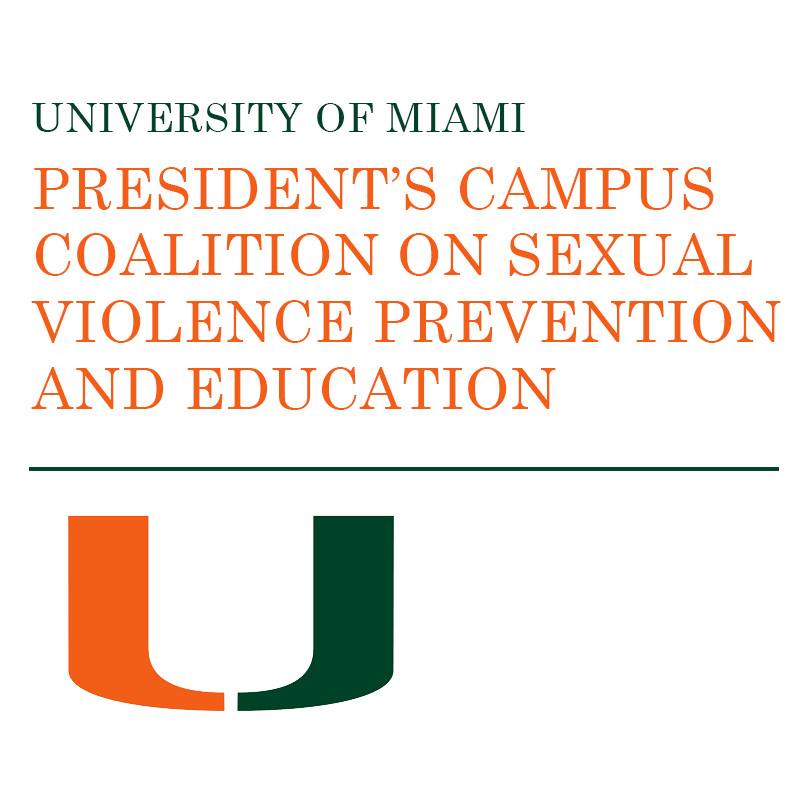The President’s Campus Coalition on Sexual Violence and Prevention met Monday afternoon in the Donna Shalala Student Center to discuss the results from the spring 2015 pilot campus climate survey on sexual violence. President Julio Frenk, Vice President of Student Affairs Patricia Whitely, the Board of Trustees and the president’s cabinet were briefed on the findings before the coalition meeting, but the survey results were only released to the public at 4 p.m. on Monday.
Just 954 students, 5.7 percent of the student population at the University of Miami, completed the climate survey on sexual violence, according to the results released on Monday afternoon. The survey was an initiative by the coalition to gather data specific to the university.
The survey was sent out to nearly 17,000 students between February and April and asked respondents questions on the overall campus climate, rape myth, prevention programming, campus resources, bystander perceptions and intervention, and students’ personal experiences.
Although the link was sent to a large number of students, the response rate was only 6.2 percent, or 1,036 students. Once students began taking the survey, that rate dropped slightly and 954 students (more than 70 percent of whom identified as females) completed the entire survey.
Two hundred seventy-four students who identified as male and eight students who did not identify either as male or female completed the survey.
“One of the things to point out here is that not only was the response rate low, but it was also not representative, and that’s why we really have to take the results with caution,” Tony Lake, associate dean of students and director of judicial affairs, said to the approximately 27 members in attendance.
Among the members of the coalition, there are representatives from most areas of the university community: undergraduate students and graduate students, athletics, housing and residential life, the medical school and the law school, Greek life, faculty affairs and many more.
Lake co-chairs the coalition with Kimberly Martin, outreach coordinator for the Counseling Center. The coalition reports to Whitely, who briefs President Frenk. Whitely said that the results of the survey could be used to start some discussion, despite low response rates.
“We have some results, I think, that can frame some conversation,” Whitely said.
A consistent thread of discussion throughout the two-hour meeting was the lack of significant representation for minority groups as well as other specific groups of students. Ashley Falcon is a wellness program administrator and played a large role in gathering and interpreting the data from the survey.
“Minority students weren’t well-represented … the main standout is going to be gender — female representation — also, probably more off-campus housing than on-campus housing versus the general university-wide demographics. Other than that, group affiliation … same thing goes for relationship status,” she said.
Because of the low response rate, data from minority or other specific student groups was limited to one or two respondents. Lake said that using the experiences of a small number of respondents to represent an entire group at UM would have been “inappropriate,” so much of the data was split up only by gender.
According to Lake, one of the primary complaints was the length of the survey. In an attempt to collect as much data as possible, respondents were asked a maximum of 26 questions, some with several parts to the question.
UM’s survey was also different from other surveys, such as the Association of American Universities (AAU) survey, which sampled 27 universities and was widely circulated by the media. Unlike the AAU survey, the one sent out to UM students asked about their experiences throughout their whole lives, not just in their time on campus.
“For us, we wanted to be more broad because, as an institution, Title IX requires us to respond to those students and provide them [with] resources whether it happened here, between themselves and another student, or not. So we took a more liberal approach,” Lake said.
A major finding in the AAU survey was the prevalence of sexual violence among students who identify as LGBT. Jessica Williams, a coalition representative and assistant professor in the School of Nursing and Health Studies, hopes the campus survey will grow in response rate to better represent the population most affected by sexual violence.
“I thought that a major finding from the AAU report was the higher levels among the LGBT community, and we just didn’t have the numbers in this [UM survey] to be able to break that out, and that’s unfortunate,” Williams said.
Amid all the conversation about a lack of data and specificity, graduate student Dina Dajani acknowledged the value of recognizing even one report of sexual violence and providing the education and resources.
“We talk about how this isn’t generalizable to the greater UM population, but it’s true for those thousand people that we sampled too, and they’re important too, right?” Dajani said. “It’s good to talk about this in the context of an actual individual’s experience.”
Although the statistics from the pilot survey indicate that there is a lot of work left to be done at UM, Lake expressed a positive outlook. He said there has been a nearly linear growth in reports since the coalition kicked off less than 18 months ago.
“I can say as we’ve done more and more of our prevention and education work, the number of reports has gone up,” he said.
Isabella Cueto serves as a representative for the undergraduate student body and student media on the President’s Campus Coalition on Sexual Violence Prevention and Education.






